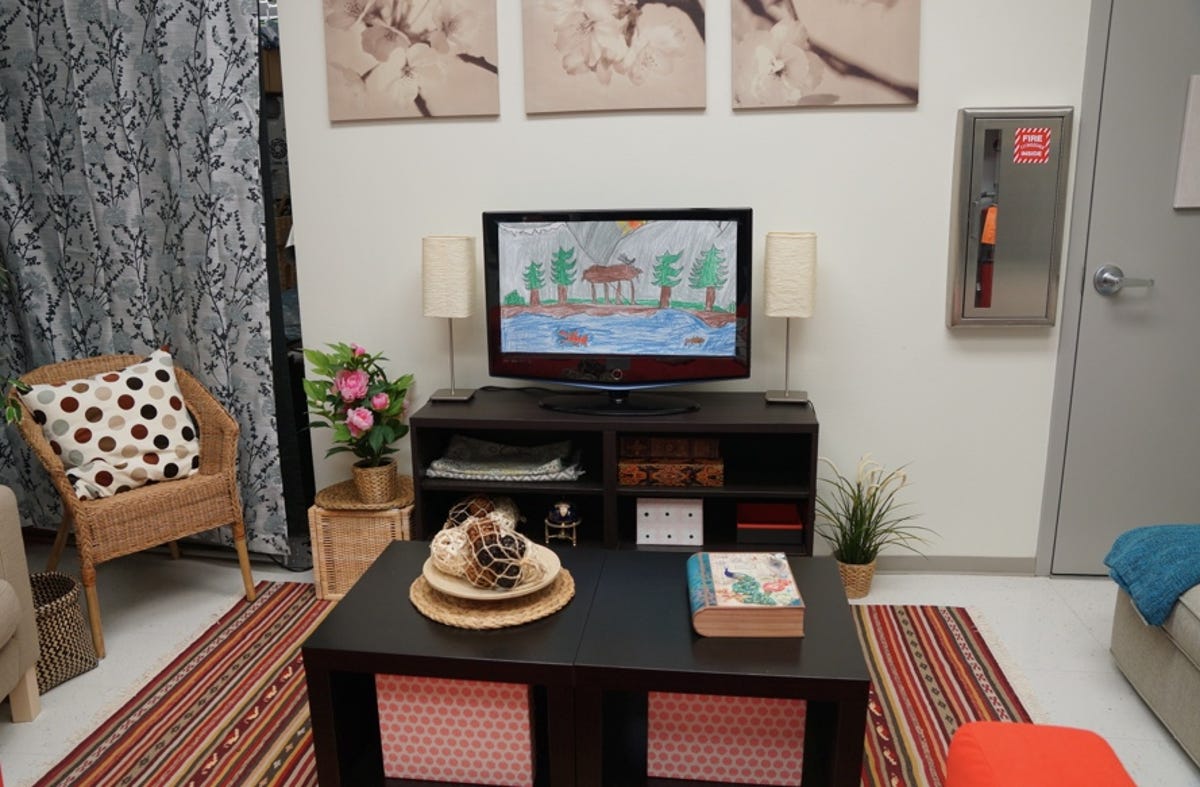
Make yourself comfy
The making of cutting-edge camera features and tools starts here, in Qualcomm's photo and imaging lab, where teams test computer vision and artificial intelligence.
The reference design
Engineering vice president Serafin Diaz shows off the reference tablet that Qualcomm mocked up for testing and perfecting 3D scanning of the living room.
Ready? Let's scan
Diaz starts panning around the room, watching the shaded portions fill in. Depth sensors give this software its 3D capabilities.
Rotate
A bluish tint shows the scan's progress (this takes time). Meanwhile, Diaz shows how he can rotate the model within the interface. If you miss a spot, you can go back.
What it means for you
Scans of interiors are accurate, Diaz says, which makes this type of program ideal for remodeling and other architectural work.
Kids these days
"Kids are three-dimensionally-aware," Diaz said. "I believe the next generation is going to demand these kinds of features on their mobile devices."
Extra circuitry
It isn't pretty, but you can see the mods that help make this demo work on a Qualcomm chip.
Even if a device has a Qualcomm chip to support 3D imaging like this, electronics makers will have to decide if they want to use the features in their products.
3D object scans
This next demo scans the space for planes, like walls and tabletops. It can then compute the volume of objects in the space, which would be ideal for a device like a robot to have, so it can interact with those objects or avoid them.
The robot room
You can't rely on humans to test algorithms, Diaz said.
Robot arm
You need precise, repeatable motions. Hence, this robotic arm, which follows a set of complex directions to test 3D tracking.
Close up
The robot in question wields a smartphone in its clutches.
Keep a human on hand
The labs' human occupants still maintain override control and perform some individual tests as well.
Artificial intelligence smarts
Zeroth sounds like a comic book villain, but is actually a platform for running AI imaging functions.
Smart sorting
This gallery is really cool. You can find photos by attributes such as clouds, sunrises, indoor, party -- all from the device. The gallery won't waste time consulting the cloud.
What is this?
The camera can look at live objects, like these flowers, and adjust settings to take the best photo. It also automatically tags the images.
Photos, too
In addition to accurately describing real-life objects, this Zeroth camera can break down photos of scenes as well.
More tags
The tags on this picture are easier to see: car, outdoors, no people. Well, maybe it needs a little more work. Remember, this is still a demo. The final version will tag in the background.
Face detection
The camera will also try to auto-tag people it knows by faces it sees, meaning that you can search photos by looking for a person's name.
Handwriting recognition
Optical character recognition is a tough nut to crack. This one reads and converts handwriting, not just printed text.
Overlay
Converted text overlays the original handwritten note here. You can slide your finger to see both views. Imagine taking a photo of a whiteboard, then later searching through the digitized text.
Want more? See how magnetic fields make wireless charging a whole lot cooler.

